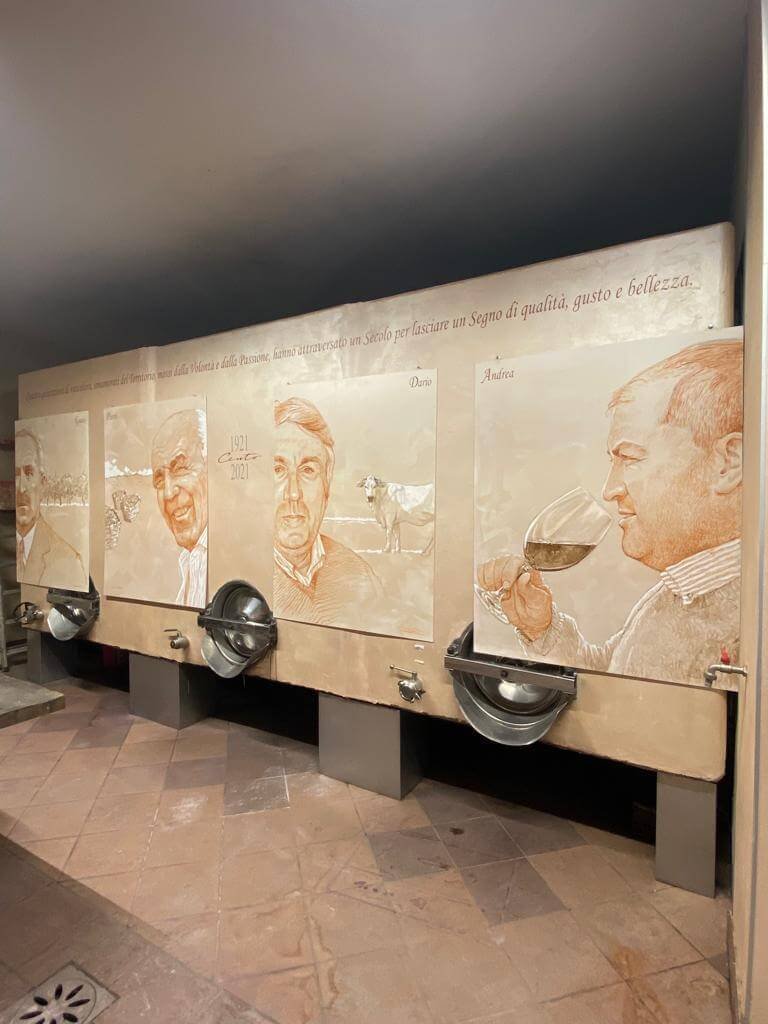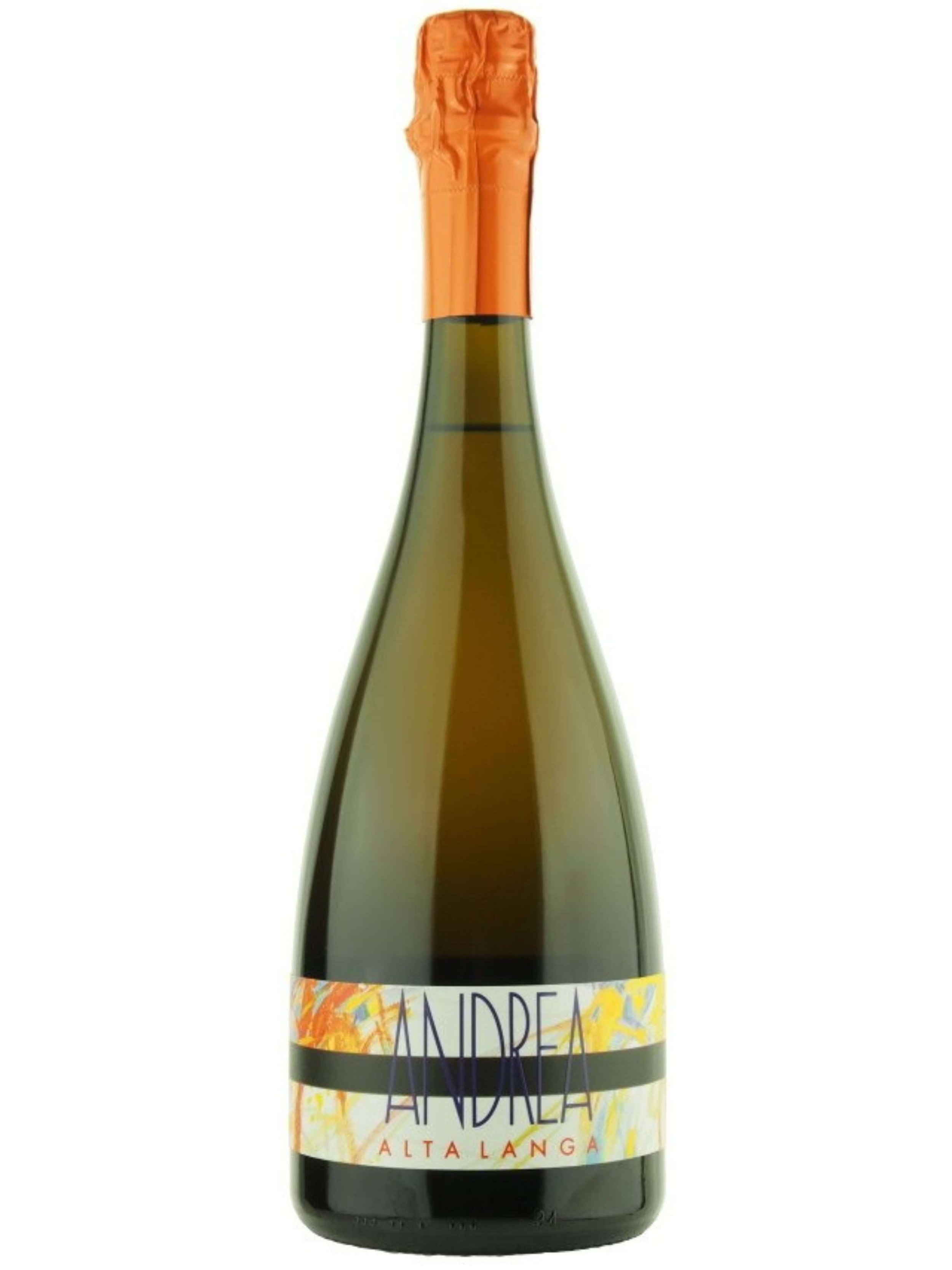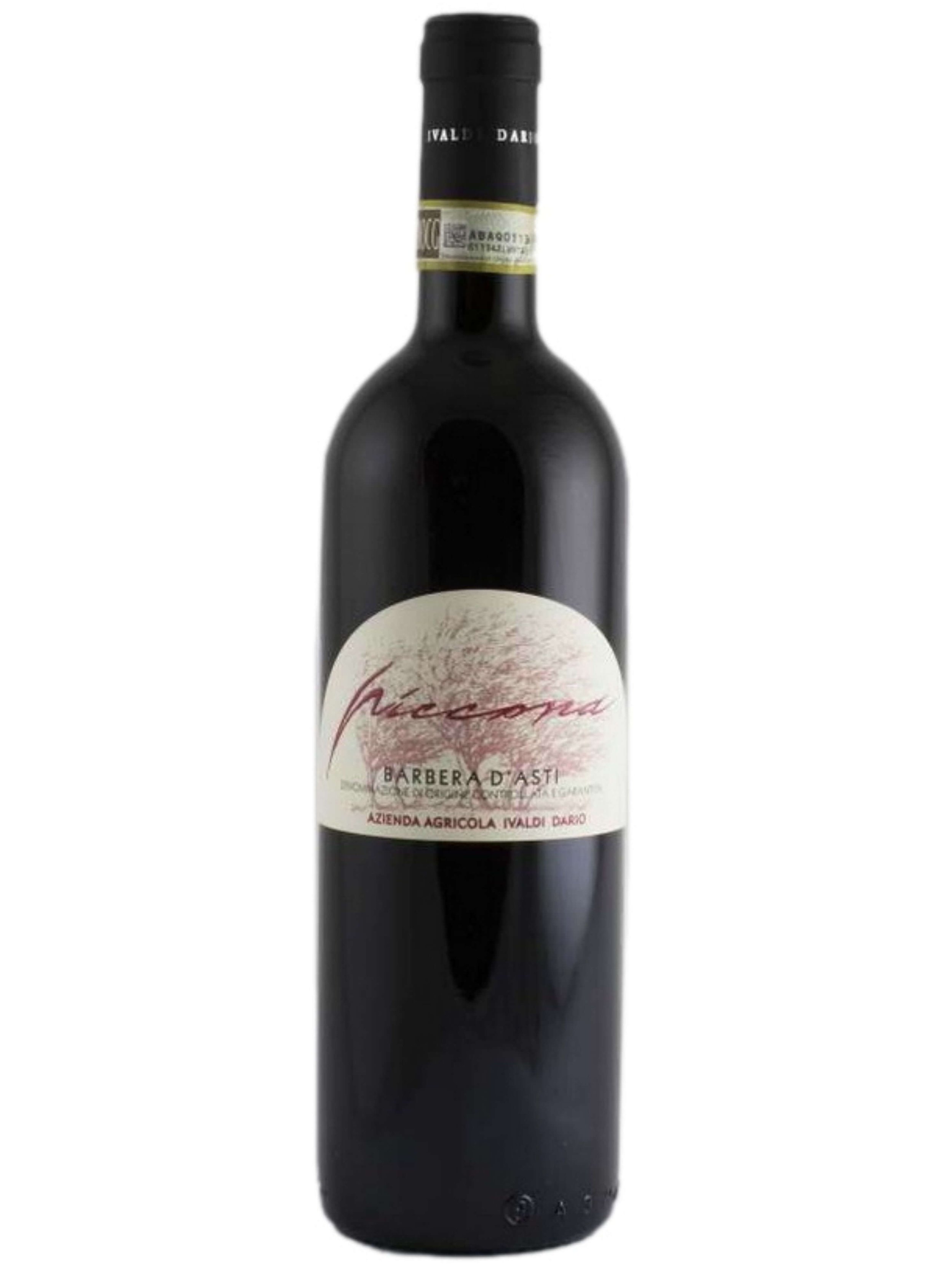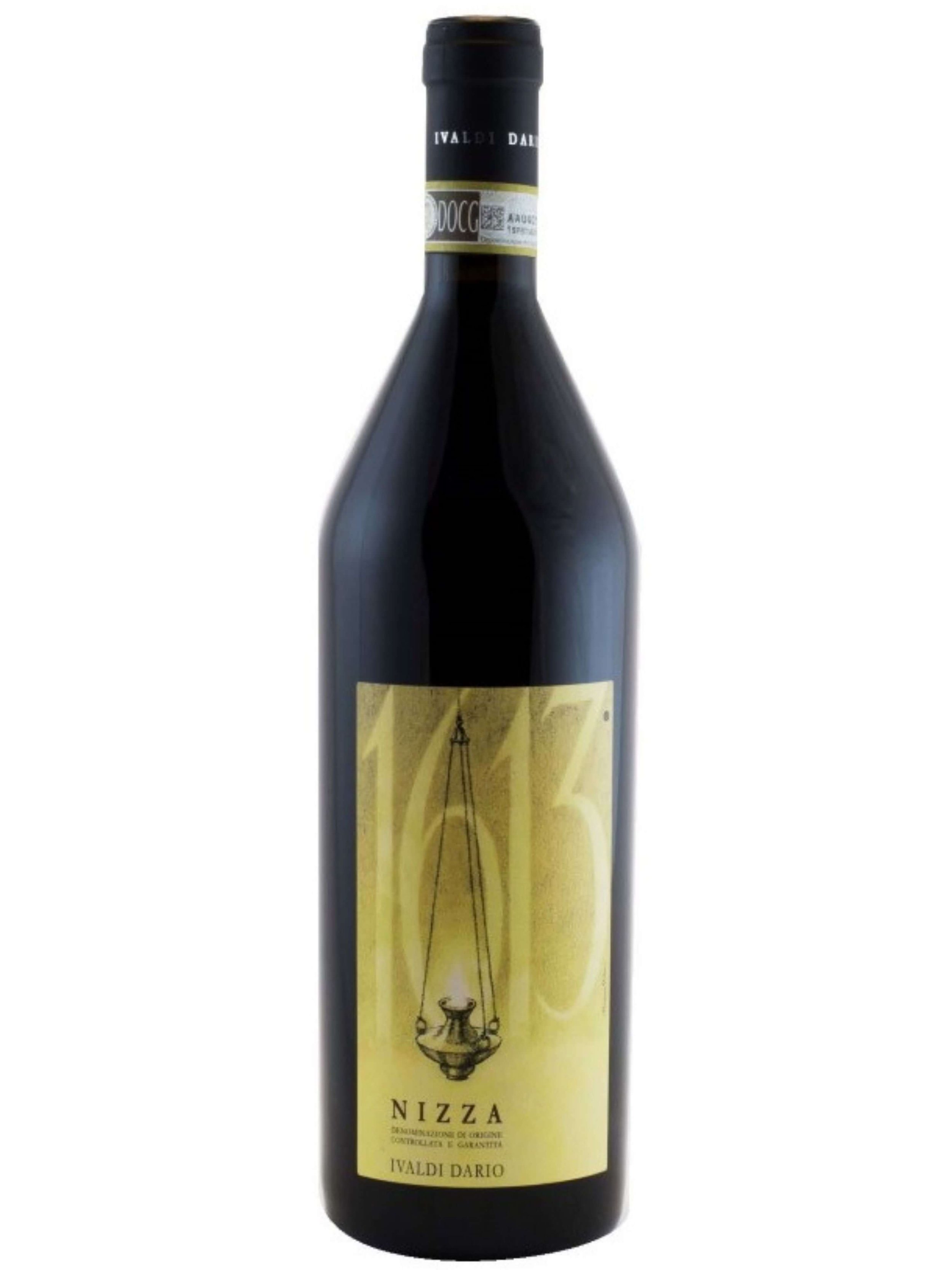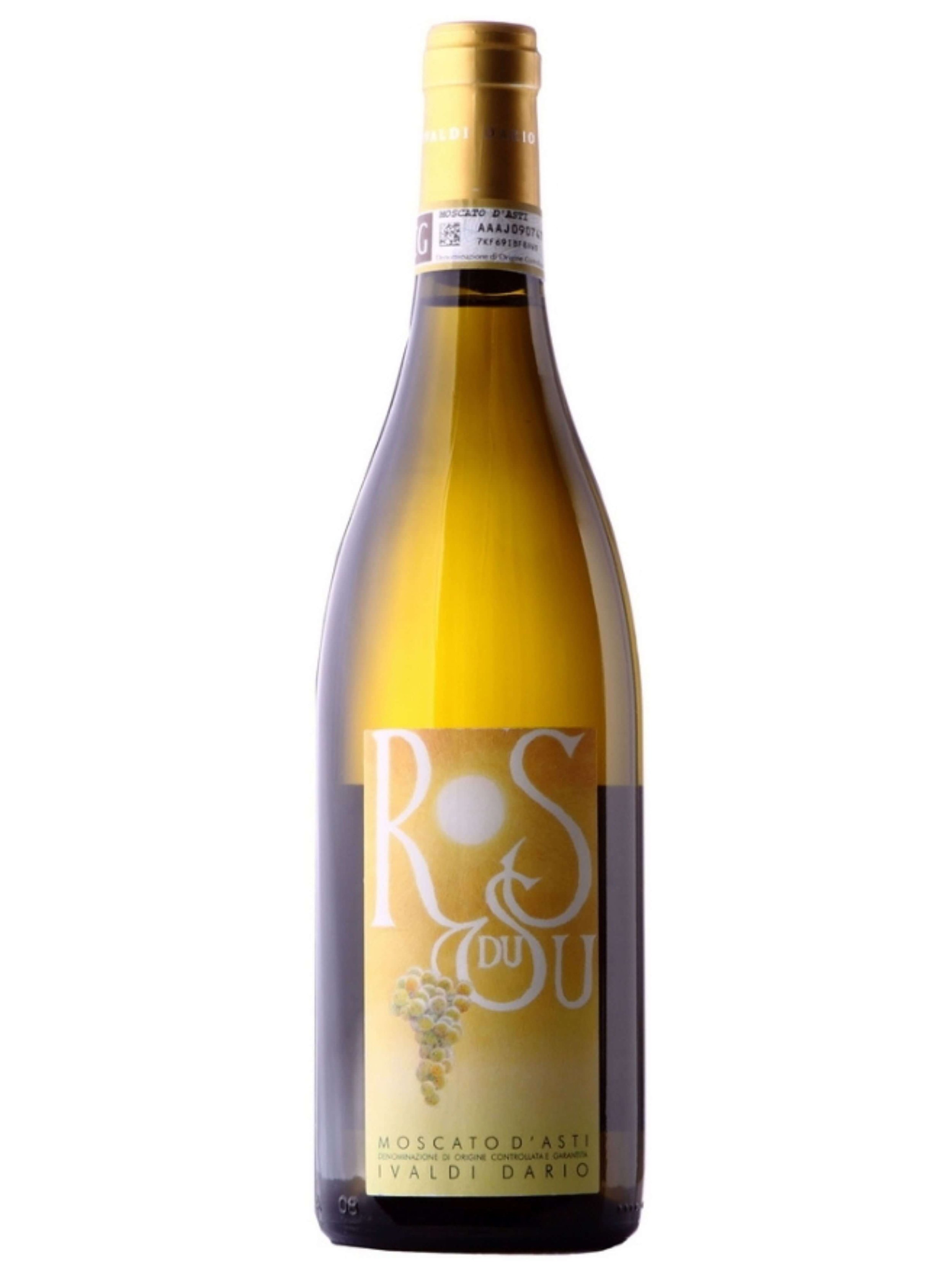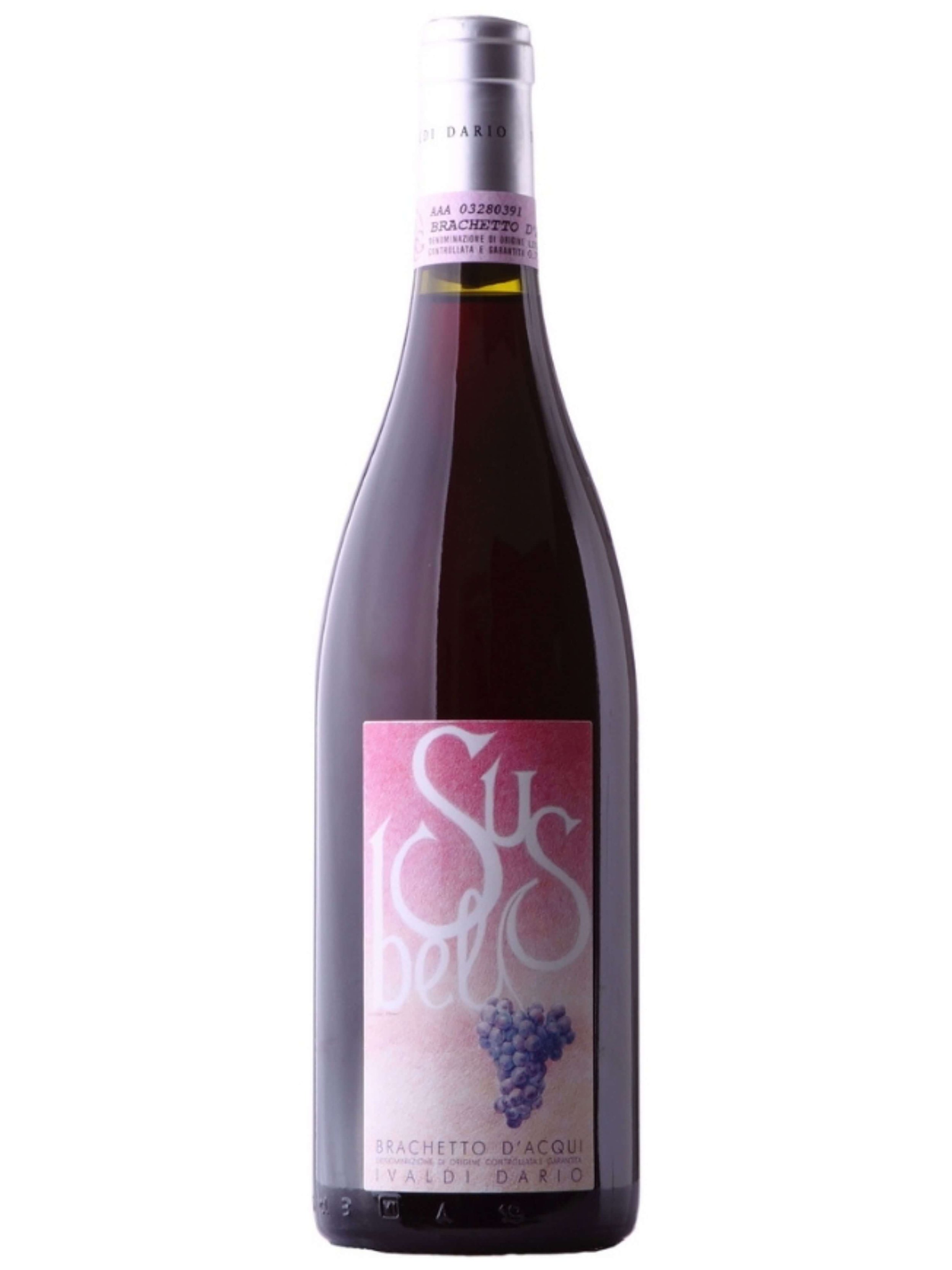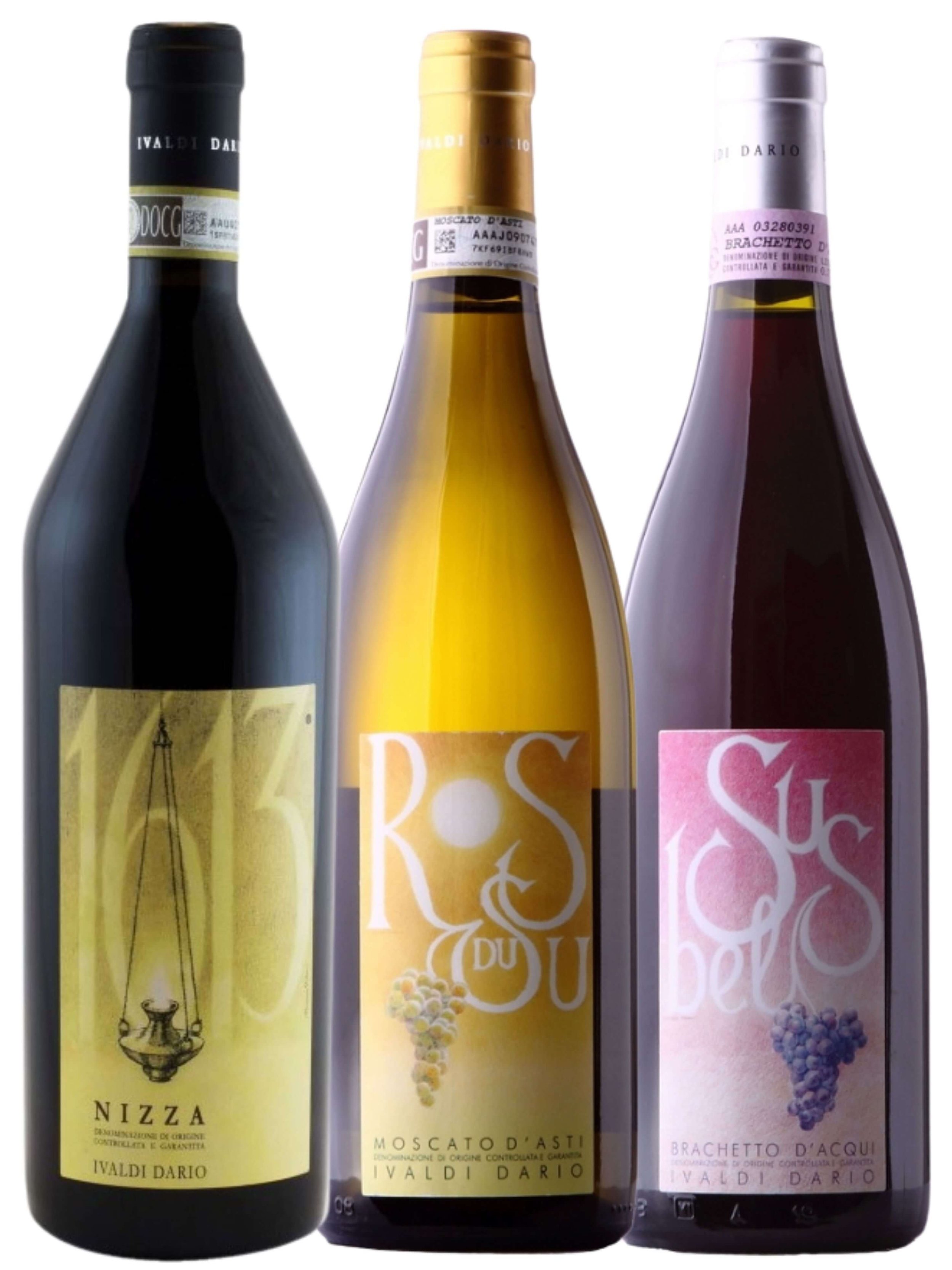Full Immersion in Asti-Monferrato Winemaking with Andrea Ivaldi
Picture this: rolling green hills with forested edges, dotted with wine vineyards, hazelnut orchards or sunflower farms and the occasional picturesque hamlet. Around every bend, a new and more beautiful vista than the one before greets the eye. If you’re in central Piemonte, you are in the heartland of the Monferrato region, named as a UNESCO world heritage site in 2014 (along with its neighbors: the Langhe and Roero hills) for its beauty and cultural significance connecting ancestors here to the grapevine and wine.
Andrea Ivaldi in his wine cellar in Asti Monferrato.
The entire Monferrato region has a deep and strong heritage for making world-renowned wines of superior quality. But possibly the biggest draw to this region is its diversity with a capital D: diversity in nature and terrain, diversity in planted agriculture, and diversity in grapes and winemaking style. Compare this to the Alba region just to the west, whose beauty and wines are also famed and known as the Langhe (explore more of this area in our article). But that region that receives a lion’s share of today’s press attention might fairly be described with the pre-fix “mono” as in mono-culture. The terrain is dominated by one crop: vines. That’s what you will see for miles (ok, kilometers). And those vines are dominated by the Nebbiolo, the grape of powerhouse Barolo. You can learn more about Monferrato regions in our previous article.
The Monferrato is divided into three sub-regions: Basso, Alto, and in the area spanning north and south of historic Asti, the Monferrato Astigiano. It is within this area, known by wine enthusiasts for its historic wine-growing heritage long linked to fragrant moscatos and fruity to structured barberas, that we find Ivaldi estate winery, in Nizza Monferrato. It is a small family winery quietly producing a broad swath of the wide variety of famous DOCG and DOC wines born from the area, in every style, from various native grapes that have been cultivated on these hills for centuries.
These are honest, beautiful wines that express the grape variety, speak to the land and are allowed to reflect vintage variation. Available in bottle today or, not long ago only sold in demijohns, Ivaldi wines are born to honor tradition while bringing out the best expression of each grape variety.
Andrea Ivaldi: A Winemaker Doing It All
Meet Andrea Ivaldi, fourth generation winemaker growing grapes and making wine on the same land, in the same winery purchased by his great-grandfather, Guido, one hundred years ago, outside the historic wine village of Nizza-Monferrato.
Andrea Ivaldi has built on the winemaking wisdom of his great-grandfather Guido, grandfather Pietro, and father Dario and is now crafting his own wines in every style. And each of the standout wines that Vero offers have DOCG status. You know these wine names: Barbera d’Asti, Nizza, Moscato d’Asti, Brachetto d’Aqui, and one of the newest DOCGs to the region, Alta Langa, an extraordinary, historic traditional method sparkling wine.
When we first heard about the wide diversity in the Ivaldi portfolio, we were curious what one very small family producer might achieve across this broad spectrum of wine styles. So we were excited for the opportunity to meet Andrea, learn his family’s story and his craft, and yes, taste the wines. You can watch the recording of our chat and VeroTalk HERE.
Legacy and Land
When Guido Ivaldi purchased the property in 1921, it included a home, a cantina (winery), and a little over two hectares of mostly barbera vines with a bit of dolcetto. The winery was equipped with three concrete tanks that had already seen potentially a hundred years of wine vintages before Guido and his wife Francesca took ownership.
The four generations fo Ivaldi winemakers, displayed on their passed down cement tanks.
Over the decades and generations, more hectares were added to Ivaldi’s contiguous estate and new grapes planted. Moscato was added to the Barolo in the in the 60’s and 70’s, and chardonnay was planted in the 1980’s. Eventually brachetto, more dolcetto and recently, even nebbiolo was added to the family estate vineyards, which now total 12 hectares. But all the while, the family, and Andrea today, still makes use of those same concrete tanks Guido purchased with the winery so long ago.
A Series of Firsts
Some of Andrea’s earliest memories are of playing in the vineyard while his grandfather toiled. And he spent his earliest youth helping his father in the winery. The allure of the land, the vine, the grape and wine seeped into Andrea’s fascination. It wasn’t only tradition that kept Andrea in the family business.
He told us he has a passion for the craft of winemaking and for this land that he will inherit from his father Dario (who recently turned 70 and is still working every day). Andrea is excited by the possibility to craft and create, always thinking about the next wine he wants to make or where he wants to take them. He is proud of this endeavor his family has built, and he told us that he wouldn’t dream of being the generation to stop it. When we learned more about Andrea, we knew he had both the heart of an artist, a love of this lifestyle, and the driven nature of an entrepreneur. Three qualities that tend to keep these traditional wine families continuing their tradition.
In the Italian tradition of having to select a major at the high school level, at 14 years old, Andrea selected an agricultural high school in Alba where he graduated with a specialty in enology. His passion remained and he continued his study, later earning a degree in Oenology from the University of Grugliasco, near Torino. Andrea was the first in his family to bring this kind of degree and level of outside expertise to the family endeavor.
Andrea was the 4th generation to make wine, the third generation distributing wine beyond the family, and the second generation to sell wine commercially. But get this: Andrea was the first to produce wine for the bottle. In 2001, Dario allowed his 21-year-old son to manage the harvest and vintage from start to finish. That was the first vintage the Ivaldi family wines released with a brand on a label, and bottled wines on the market, all per the entrepreneurial drive of Andrea.
Since then, Andrea has introduced a few more firsts for the family business. He has opened Ivaldi wines to overseas markets and Vero. He introduced the family’s first traditional method sparkling wine, named “Andrea,” an Alta Langa DOCG. And he has recently planted a new grape variety,Nebbiolo.
4th generation winemaker Andrea Ivaldi, tending his Monferrato Astigiano vines.
The Land
Ivaldi’s vineyards are in Nizza Monferrato, the heart of arguably the highest quality barbera wines in Piemonte, or all of Italy, (in the form of Nizza DOCG) with soil, a favorable climate and an enological tradition of over 5 centuries.
But it’s also the land for the fragrant moscato and brachetto, fresh versions of Barbera d’Asti, and certain areas have land and climate perfect for growing chardonnay and pinot noir ready for the best sparkling wines. All are well-positioned on hilly slopes that guarantee a favorable microclimate and sunshine to ripen the grapes, and soils that give excellent body and structure for long-lived wines over time. Work in the vineyard is carried out by hand, exclusively by the members of the family, from pruning to harvest.
The Ivaldi estate vineyards are divided in three areas quite near each other. The original land that surrounds the winery is the south-facing slope of Piccona vineyard, on 6 hectares of calcareous rich clay. Planted with barbera, it also includes dolcetto and brachetto among other grapes. Another plot of land is nearby, outside the village Castel Boglione, known as “Valle Vento” (valley of winds) for the cooling air that arrives from the Ligurian Sea, less than thirty minutes away as the crow flies. With an aspect a bit more northerly and a mix of clay and sandy soils with some limestone, the area is well-suited for Ivaldi’s refreshing whites, like the moscato and chardonnay. And finally, in the hamlet Bricco Cremosina, we find another south-facing, calcareous clay vineyard. It is here where Andrea grows the barbera grapes destined for his Nizza.
It Begins in the Vineyard
We asked Andrea about his driving philosophy for viticulture and land. He quoted one of his viticulture professors who instilled in him that wine begins in the vineyard. You must start with healthy and beautiful fruit to make beautiful wine. Andrea devotes much attention to their vines and chooses practices always with this aim: beautiful fruit from healthy soils.
Ivaldi vineyards are SNQPI certified sustainable. Andrea’s practices use some organic principles but go beyond. He strives to meet the principles of Regenerative Agriculture which go steps further to ensure the land and soil are improving, in its own health and capacity for carbon capture. There is no tilling or plowing in Ivaldi vineyards. They allow natural herb and grass growth between vineyard rows, only mowing we needed, to maintain and improve the soil health and maintain moisture, especially helpful in the last few years of drought across Piemonte.
The Ivaldi family makes many passes through the vineyards, especially during the delicate ripening period of May to July, staying attentive to the needs of the grape depending on the weather each vintage. In cooler, humid years, they do manual leafing to open the canopy. In dry hot ones, they leave them for shading. To achieve the highest quality barbera, an abundant cropper, they pass through these vineyards multiple times, opting for short pruning, and later in the season, dropping fruit.
In the Winery
Even with degrees under his belt, Andrea is dedicated to honoring the family practices of quality winemaking passed down to him as his heritage. He balances this dedication to tried and true tradition and family style with the modern practices and technology he gained through schooling.
Per tradition, every red wine with the Ivaldi label starts maceration in concrete tanks, including those original three that came with the winery. The Piccona Barbera d’Asti continues its aging in concrete while the Nizza is aged in wood, but only the very large and neutral botti. In Ivaldi wine, the grape and region are the star players.
The grapes come in fresh after manual harvesting, and each variety is kept separate, delivered to either concrete or temperature-controlled stainless steel tanks the family has purchased over the years in keeping with modern technology to maintain wines of superior freshness.
The Wines
Let’s move to the wines. The Ivaldi family produces a range of wines from semi-sparkling sweet to traditional method sparkling, and table wines from minerally, fruit-driven to complex and developed.
Winemaker Andrea Ivaldi proudly displaying his Monferrato wines.
Andrea | Alta Langa, DOCG
It is argued that the first Traditional Method sparkling wines in Italy began right here, in the Alta Langa zone (southern Monferrato) of Piemonte, with a tradition dating back to the 19th Century. The Alta Langa DOCG was approved in 2011.
Extra Brut
100% Chardonnay – Castel Boglione (“Valle Vento”), Alta Langa
30 months Aging on lees
Andrea allows the grapes for this wine to ripen a little longer on the vine. The result is a golden straw color in the glass and an intensity of fruit on a round, rich yet refreshing palate with lively acidity and fine, persistent bubbles. This wine is gorgeously delicious and highly quaffable.
Piccona | Barbera d’Asti DOCG
Grown at the historic vineyard at the winery on calcareous clay. The grapes get prime position: south-facing, mid-slope.
100% Barbera
12-days maceration, concrete tanks
Aged 10-12 months, concrete tanks
This estate barbera doesn’t see wood. It’s crafted to maintain and highlight the fruit and traditional style of barbera of the Asti region, redolent of small, red-berried fruits, like wild cherry, red currant, and raspberry with marked acidity. This is another highly drinkable wine with a beguiling level of concentration. It offers a beautiful coating of light powdery tannins that persist on the palate to hold down all those concentrated berry-juice flavors, all the while the sides of your mouth keep watering through a very long finish.
1613 | Nizza DOCG
Named in honor of the “legend of the lamp” that ignited spontaneously one night in Nizza Monferrato in May 1613, when locals thought all was lost to invading Montavani hoards. The lamp gave them hope and the locals prevailed.
This wine is the renowned Nizza, the once best sub-region of Barbera d’Asti, elevated to its own DOCG in 2014. Following DOCG requirements this wine sees extra ripening, extra aging in wood and is 100% barbera. The name of the DOCG is now simply ‘Nizza’.
Andrea reserves his very best grapes for this wine near the top of south-facing slopes of calcareous clay, hand selected at harvest.
100% Barbera
Bricco Cremosina, Nizza Monferrato
20 days maceration in concrete for tannins & structure
12 months in aged Slavonian oak casks
Deep aromas of conserved black cherry, prune, earth, and light spicy notes with developed secondary aromatics. It goes in like velvet and becomes full-bodied, robust with excellent tannic structure, balanced by acidic elegance. The deeper fruit and spice flavors with the balance of acid and tannin on the palate, invite either sipping meditation or a big juicy steak off the grill. This wine is delicious today or you can wait a couple years. It has years of longevity in front of it.
Now let’s move to the two wines that are named for a love of the sun, ROS du su and SUSbel, Ivaldi’s two sweet frizzante wines: an aromatic white and an aromatic red.
Ros du Su |Moscato d’Asti DOCG
Rays of the sun. That is Ros du Su in the Piemontese dialect, often used in expressions of goodwill or appreciation, as in “you are living ros du su.”
Moscato d’Asti is the famous semi-sparkling (frizzante) sweet wine made from the highly aromatic moscato bianco grape. Muscat grapes are crushed, destemmed and placed in a stainless steel tank where they undergo cold maceration for 10 hours then pressed. The juice is then slowly fermented at low temperatures for 3-4 days with no malo-lactic. Fermentation is stopped early through clarification to maintain the perfect froth and tempting sweetness, then bottled under screwcap.
100% Moscato
Vineyard in Castel Boglione – “Valle Vento”
Alcohol: 4.7%
Residual Sugar: 135 g/l
This beautiful wine has an intense aroma of honeyed chamomile whose flavors are mirrored on a concentrated palate exploding with fruit. It is pleasantly sweet with palate freshness. Enjoy with pastries, pies, and desserts based on cream or nuts. It would be perfect with hazelnut biscotti or butter cookies and is a fabulous wine to pair with the freshest cheeses. Think of it as your honey drizzle or garnish of fresh fruit!
Susbel | Brachetto d’Acqui DOCG
“Beautiful Sun” is the Piemontese dialect translation of Susbel, and the name of a vineyard block near the winery. This is another wine made in the sweet frizzante style, but red. The aromatic brachetto grape brings notes of roses and strawberries but with some tannic texture, and, as is true of most grapes from the region, refreshing with acidity.
The grapes receive 4 days maceration and fermentation on skins to extract color and soft tannins, then filtered at about 6% alcohol to stop fermentation and achieve the perfect level of sweetness and bubbles.
100% Brachetto
Nizza Monferrato
Alcohol: 6.2%
Residual Sugar: 116 g/l
This is a very fun, moderately sweet red wine with delicate tannic structure. It is highly aromatic with aromas and flavors redolent of rose petals, juicy strawberries and raspberries. It’s perfect as a refreshing aperitif during the day (maybe add some strawberries into the glass, as the locals do), or enjoy with your favorite chocolate desserts or bowl of fresh strawberries and cream.
Delicious Variety: A Family Heritage
It fascinates and pleases me that one small family winery is so successfully able to craft such a wide range of high quality, historic wine styles while paying each one the respect and attention it deserves. Yet the proof is in the bottle, and under the label, from the first generation in 100 years of the Ivaldi family to put its name there and its wine inside.
Andrea Ivaldi is stewarding the 100-year heritage of his family’s wines on their land in Nizza Monferrato with not only care, but creativity, ingenuity, drive and wisdom, and his current wines show it. Each wine has depth and character, layers of concentrated fruit flavor, liveliness, and structure. And flavors that last.
Mary Beth Vierra, who moderated the VeroTalk and wrote this article finishes with this comment: “Perhaps my biggest vote of high approval is the sheer fact that they are delicious and make my palate happy. I want to just keep drinking them.”
Mary Beth Vierra is a Certified Wine Educator and Italian Wine Scholar and founder of Crush Course.


